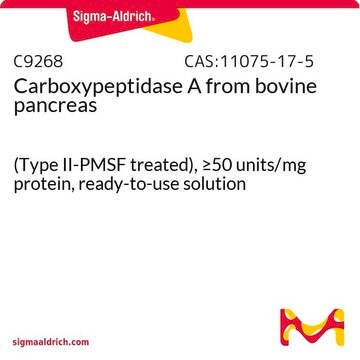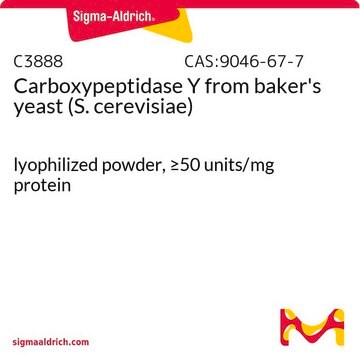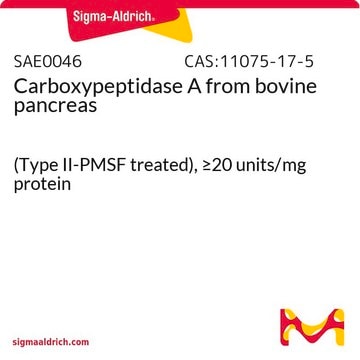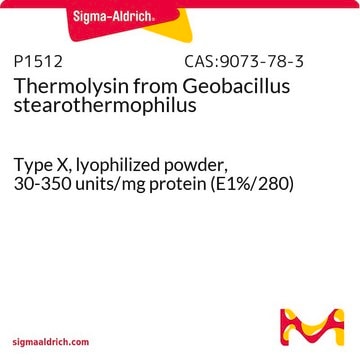C9658
Carboxypeptidase G from Pseudomonas sp.
lyophilized powder, ≥3 units/mg protein
Sinónimos:
γ-Glutamyl hydrolase
About This Item
Productos recomendados
formulario
lyophilized powder
Nivel de calidad
actividad específica
≥3 units/mg protein
mol peso
homodimer ~90 kDa
composición
Protein, ~70% biuret
solubilidad
H2O: soluble 0.5 mg/mL
temp. de almacenamiento
−20°C
¿Está buscando productos similares? Visita Guía de comparación de productos
Aplicación
Acciones bioquímicas o fisiológicas
Definición de unidad
Forma física
Nota de preparación
Palabra de señalización
Danger
Frases de peligro
Consejos de prudencia
Clasificaciones de peligro
Eye Irrit. 2 - Resp. Sens. 1 - Skin Irrit. 2 - STOT SE 3
Órganos de actuación
Respiratory system
Código de clase de almacenamiento
11 - Combustible Solids
Clase de riesgo para el agua (WGK)
WGK 3
Punto de inflamabilidad (°F)
Not applicable
Punto de inflamabilidad (°C)
Not applicable
Equipo de protección personal
Eyeshields, Gloves, type N95 (US)
Certificados de análisis (COA)
Busque Certificados de análisis (COA) introduciendo el número de lote del producto. Los números de lote se encuentran en la etiqueta del producto después de las palabras «Lot» o «Batch»
¿Ya tiene este producto?
Encuentre la documentación para los productos que ha comprado recientemente en la Biblioteca de documentos.
Los clientes también vieron
Nuestro equipo de científicos tiene experiencia en todas las áreas de investigación: Ciencias de la vida, Ciencia de los materiales, Síntesis química, Cromatografía, Analítica y muchas otras.
Póngase en contacto con el Servicio técnico











![4-[N-(2,4-Diamino-6-pteridinylmethyl)-N-methylamino]benzoic acid hemihydrochloride hydrate 95%](/deepweb/assets/sigmaaldrich/product/structures/322/449/9a8d4b73-d9c4-4692-93d4-16a7a81d35c4/640/9a8d4b73-d9c4-4692-93d4-16a7a81d35c4.png)



